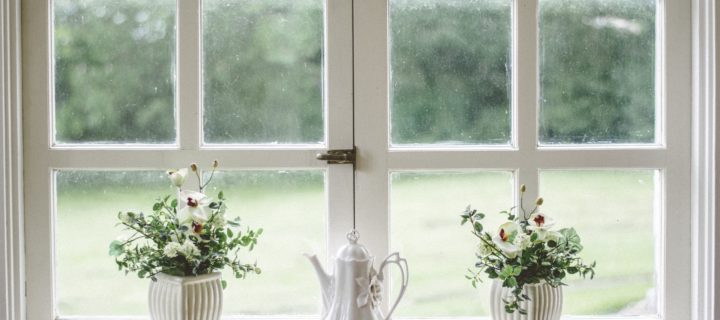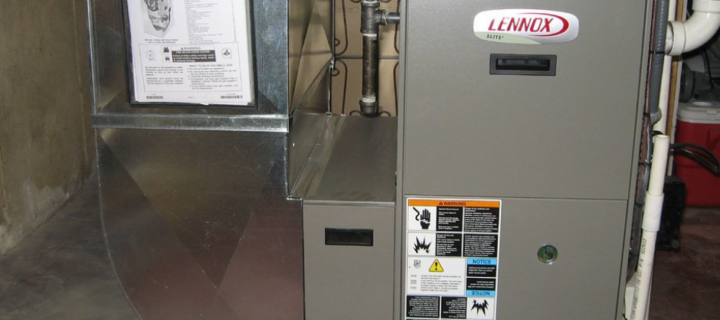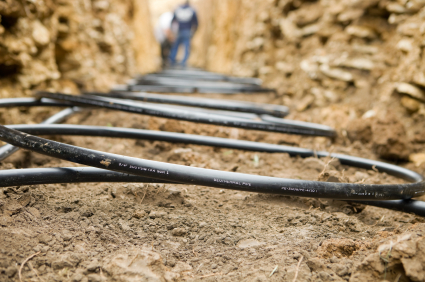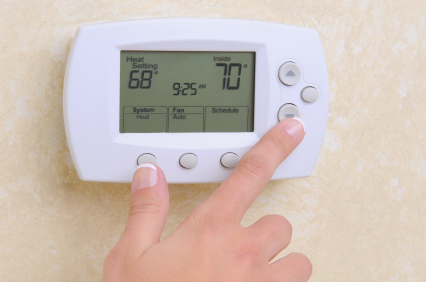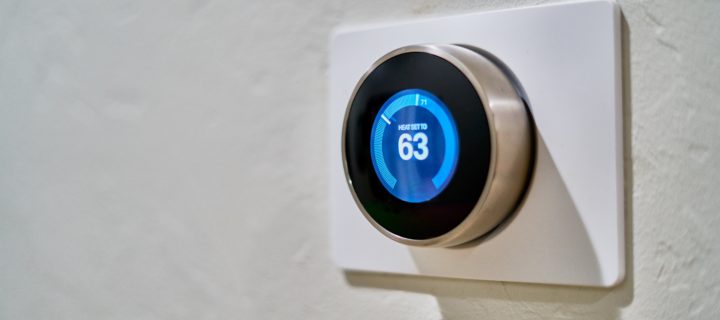The containment efforts for the virus that is currently affecting us all is suggesting that people stay home as much as possible. While this can be seen as an inconvenience for many, you should be seeing it as an opportunity. What should this be an opportunity for, you ask? It’s an opportunity for make all kinds of home improvements that you might have been ignoring for a lot longer than you would like to admit. Whether it is cleaning out your home’s rooms, gutters, or garage, cleaning up the flower beds, or painting a room that you have been ignoring, you now have a really good opportunity to do all of these things. Give the rooms of your home a makeover If you have ever done any DIY home redecorating, giving the rooms of your home a makeover can take a long time. Now that people are being told to stay in their homes for a short while, now is the perfect time to do this. Whether this involves painting, rearranging furniture, or anything else that entails redecorating and cleaning, you will have the opportunity to bring your vision to life. Make the flower beds look better than they ever have before Cleaning out flower beds and pulling out their weeds surrounding them is one of the most time- consuming tasks in home improvement. Very few have the time to do this and that is why it gets ignored often. Think optimistically — by summer, your flower beds will look better than they ever have. Give your gutters and garage some much needed attention Admit it, you have probably been ignoring your gutters or garage for a very long time. If you have been sheltered in place because of what is currently going on, you’ll have a fantastic opportunity to clean your gutters and garage to perfection, making them look just as good as when you first purchased your home. Get ready to paint! Is there a room in your home that you know that you needed to paint for a very long time, only to never find the time to do so? Well guess what: Now you have the perfect opportunity to take as long as you need...
Read MoreWith talks of a harsh, frigid winter already underway, now is the time to consider whether your furnace will be able to operate reliably and efficiently for the duration of winter. If your furnace or and part of your heating system requires repair or replacement, it’s best to address the issue as soon as possible. An expert should perform routine maintenance on your furnace at least once every year to ensure that the unit is performing well and lasts its lifespan. As a homeowner, there are certain things to consider when assessing whether your furnace is in top shape. How old is your furnace? If you have no idea, or if you believe the furnace to be more than 15 years old; chances are that it’s in its last days. The average heating appliance lasts about 10 to 14 years. So, it’s not uncommon for an older furnace to have performance problems. A qualified, experienced technician may be able to get your old furnace up and running at least for one more cold season. Performance Issues A furnace that is in good condition will perform most efficiently. As time goes on, the furnace will deteriorate, and efficiency will decline. Pay close attention to your utility bills. If your heating costs are rising, your furnace may need attention. Also, pay close attention on variations in temperature from room to room. While uneven heating can be due to issues with windows, doors, or insulation; it is often a sign of reduced furnace efficiency. Sound and Appearance Some signs of a failing furnace can be very subtle and go unnoticed until it is too late. Others are obvious, but you must pay close attention. It’s a good idea to take the time to go listen to your furnace while it is running. Pay attention to excessive noise, as it is likely an indication that your furnace requires maintenance. Rust and corrosion may also indicate that your furnace needs to be inspected by a professional. Lastly, if your furnace is emitting an unusual odor, contact a professional right away. When to Purchase a New Furnace Near the end of its lifespan, your furnace may break down often and require frequent repairs and maintenance....
Read MoreWhen it comes to landscaping and curb appeal, trees can be a wonderful addition to your yard. From a functional standpoint, trees can provide shade or even utilize standing water in areas of your yard that may become over saturated when it rains. Aesthetically, trees can provide color and dimension. But certain trees can also be more trouble than they are worth. In fact, certain trees can be a hazard if you are not careful in which varieties to pick to plant in your yard. Here is a list of some trees that you should avoid planting, as well as some varieties you should consider the next time you head to your local nursery. Trees to avoid: Silver Maple While the Silver Maple is a large, fast growing tree that provides lots of shade; Its rapid rate of growth makes for brittle limbs. Brittle limbs are more likely to break during storms and could cause property damage or worse, injuries. In addition to brittle limbs, the Silver Maple also has a shallow root system. Because the roots remain closer to the surface, they often cause cracks in sidewalks and driveways. Ash Unlike the Silver Maple, Ash trees tend to be very sturdy. But the health of these trees is threatened here in the Midwest by an insect called the emerald ash borer. The emerald ash borer is a small beetle that reproduces inside Ash trees, causing loss of bark and damage to the branches. Weakened branches pose a safety issue, and could cause damage to property. Because the emerald ash borer has become so prominent in Ohio it is best to avoid planting Ash trees, especially in residential areas. Existing Ash trees should be monitored closely by professionals for health and stability. Willow Possibly one of the most recognizable of all trees, willow trees have long, slender branches that are beautiful to look at. The downside of the Willow tree is its root system. Willows have a very aggressive root system that craves water, thus causing damage to sewer lines in residential areas. In addition to its invasive root system, the Willow tree has weak, brittle wood that can pose a hazard during storms. Lastly, compared to most other...
Read MoreSummer will be over before we you know it, and you may be thinking about getting a head start on preparing your home for fall and winter. One of the most important things you can do to prepare for the cooler seasons is inspecting your furnace for signs of wear and considering the repair or replacement of a broken system. It can be difficult to know when you should have your furnace surfaced by a professional and repaired or whether you should have your system replaced in its entirety. As a homeowner in the Midwest, you probably understand the importance of having an operational furnace for the winter. A faulty heating system can turn even a mildly frigid day into an uncomfortable situation. You can ensure your family’s comfort throughout the cold months by addressing your furnaces needs in the summer or early fall before the chilly weather sets in. Identifying issues early on allows time for you to have the necessary repairs done, or have the unit replaced by professionals. By planning ahead, you can research options and budget for the expense. While situations vary, these tips will help you learn about the best time to service your furnace, problems you may encounter and whether to repair or replace your system in each scenario. Scenario 1: Your furnace is emitting carbon monoxide- Any system that could expose you and your family to carbon monoxide needs to be replaced as soon as possible. A furnace with a cracked combustion chamber allows carbon monoxide to leak into your home and should always be replaced immediately. Carbon monoxide is an odorless gas, which is why it can be a silent killer. Households with gas furnaces should always be equipped with carbon monoxide detectors. Between 2010 and 2015, 2000 people died from accidental carbon monoxide poisoning. The highest number of deaths occurred in the winter during the months of frequent furnace use. Scenario 2: Your furnace is over 15 years old- Even the highest quality heating systems aren’t built to last forever. According to the U.S. Department of Energy, a furnace should last 15-30 years before you’ll need a replacement. This varies by brand, quality, and other factors. But a heater will generally start to...
Read MoreFor residents that live in climates with moderate heating and cooling needs, heat pumps offer an energy-efficient alternative to furnaces and air conditioners. Like your refrigerator, heat pumps use electricity to move heat from a cool space in your home to a warmer space. This makes the cool space cooler and the warm space warmer. During seasons that require the use of heat, heat pumps move heat from the cool outdoors into your warm house. During cool seasons, heat pumps move heat from your cool house into the warm outdoors. Because heat pumps move heat rather than generate heat, they can provide equivalent space conditioning at as little as one quarter of the cost of operating conventional heating or cooling appliances regularly. There are three types of heat pumps: air-to-air, water source, and geothermal. They collect heat from the air, water, or ground outside your home and concentrate it for use inside. The most common type of heat pump is the air-source heat pump. This type of heat pump transfers heat between your house and outside. Modern heat pumps can reduce your electricity use for heating by approximately 50 percent compared to electric resistance heating such as furnaces and baseboard heaters. High-efficiency heat pumps also dehumidify better than standard central air conditioners, resulting in less energy usage and more cooling in summer months. Air-source heat pumps have been used for many years in nearly all parts of the United States, but until recently they have not been used in areas that experienced extended periods of subfreezing temperatures. However, in recent years, air-source heat pump technology has advanced so that it now offers a legitimate space heating alternative in colder regions such as the Midwest. For homes without ducts, air-source heat pumps are also available in a ductless version called a mini-split heat pump. In addition, a special type of air-source heat pump called a “reverse cycle chiller” generates hot and cold water rather than air, allowing it to be used with radiant floor heating systems that are in heating mode. Geothermal (ground-source or water-source) heat pumps achieve higher efficiencies by transferring heat between your house and the ground or a nearby water source. Although they cost more to install, geothermal heat pumps have...
Read MorePatios often serve as a place to gather with friends or relax on your own. Here are five easy ways to improve the ambiance of your patio. Tip #1—Get rid of patio pests: Patios are fun, but pests are never good. Pinecones serve as a great way to deter creatures like chipmunks that like to dig and make a mess. Chances are your plants will enjoy having pinecones in their growing containers because they acidify the soil. Bold, beautiful showstopper plants like azaleas and rhododendrons will burst with color amid pine cones, too. Tip #2– Rejuvenate your dilapidated patio with color. Try painting flower containers in colors that are bold, bright, and modern. You might also consider mimicking the appearance of upscale stone patios with just a bit of paint and some concrete stamps. A coat of concrete stain will give your old concrete a fresh new look. Tip #3—Refurbish your patio furniture: Make old, worn out furniture pieces look new with a coat of spray paint. Spray paint comes in a variety of colors and finishes. It can also be purchased in formulas suitable for metal, wood, and even plastic. If you need to replace some of your furniture, choose sturdy materials that can resist dampness and intense sunlight. Tip #4—Add some lighting: Outdoor lighting works wonders for night time ambiance. Lanterns and lamps can be used to brighten up tables and dark corners. Stringing lights across the patio also adds a nice touch. Bold lights, such as ones shaped like trees and topiaries are also popular. To conserve energy, use solar powered products or energy-efficient bulbs. Tip #5—Add a fire pit: A fire pit or fire table makes a warm, welcoming place for you and your guests to gather on cool evenings well into the fall. You can purchase one at your favorite retailer or make one yourself with flagstone slabs and rocks. Always be sure to research your municipalities fire code and ordinances as they pertain to the use of fire pits beforehand. Efficient Heating & Cooling are experts in high quality home comfort solutions to meet your needs. Contact us today to request an estimate or schedule...
Read MoreStaying cool in the summer heat can be a difficult task. Intense summer heat can make your home less comfortable to be in while raising household energy costs. Here are some simple ways to stay cool and comfortable during the summer. 1. Turn on your fans when air conditioning is in use. Using a fan while the air conditioner is running greatly enhances the cooling effect. While the air conditioner lowers the temperature of the air, fans circulate the cool air throughout the room and house. The boost in air circulation creates a wind chill that allows you to stay cool without having to set the AC unit very low. 2. Try using ice and a fan to stay cool. Set a bowl full of ice in front of a table fan. As the ice melts, the fan will blow cooler air toward you. This hack is great for while you’re working at your desk. You could also do the same thing with a fan on your kitchen counter to stay cool while you’re cooking. 3. Cut back on the use of appliances and lights. Appliances, gaming consoles, computers, and even standard light bulbs heat up your house while they are running, so turn them on as little as possible. Run the washing machine only when you have a full load. Eliminate the heat generated when using the dryer by hanging your clothes outside or around the house to air dry. Avoid using the dishwasher if it is not full. Instead, hand wash dishes in the sink and let them air dry or use a towel. Avoid using the oven and stove to prepare meals. Use the microwave or grill instead. You could also consider eating meals that don’t have to be cooked. Chef salad with julienned turkey and/or ham and deli sandwiches are great options. 4. Thirsty but don’t have any ice? Wrap your beverage of choice with a damp paper towel, then place it in the freezer for about fifteen minutes. Your drink will be chilled to perfection! 5. Eat and work out on your deck or patio in the evening. Once the sun is down, outdoor spaces serve as ideal places to have dinner, do homework,...
Read MoreIf you’re looking for advice on saving money this summer, Efficient Heating and Cooling is here to help. Keeping your home cool, while saving money on your energy bill, is the easy part. Allowing your air conditioning unit to work as efficiently as possible, is the key. Helpful tips for saving money while air conditioning your home this summer. Check out our 8 tips to help you keep your house cool, and your wallet full. Annual Maintenance. Before turning your unit on for the summer, it is recommended to have a professional service company, such as Efficient Heating and Cooling come out to inspect it, clean it, and make sure it’s ready to create a cool environment in your home. Replace Filter. Remembering to replace the filter at the beginning of each season, helps maintain good air flow. If the air does not flow freely, your air conditioning unit will be over worked and possibly give up on your most needed days. Programmable Thermostat. Programming your thermostat allows you to stay cool, save energy, and not have to think about it. It’s a win-win situation. Ceiling Fans. Ceiling fans are a great way to move the cool air around in your home. There’s an adjustment at the base of the fan, which help the blades pull up cool air from the floor and umbrella it down around the room. (The opposite way in winter, pushes down the warm air hovering at the ceiling to keep your rooms warmer.) Drawing moisture out of the air, a dehumidifier will help keep your home comfortable. Stable Inside Temperature. Your HVAC is already working hard for you, so be kind to it. Adjust the thermostat while you’re away or sleeping by only a 5-degrees, so it doesn’t take so long to cool things down when you get up or back home. Grilling outdoors vs baking indoors, is a pleasant way to keep the heat out of the kitchen as well as the rest of your home. Window Blinds and Drapes. Keeping the blinds and drapes drawn during the hottest part of the day, or in order to block direct sunlight, helps keep inside temperatures from rising. Shade trees and bushes can...
Read MoreExtreme outside temperatures in both summer and winter can make it difficult to keep your home comfortable inside. Turning up the heat or using central air can help. But without taking the precautions to make sure your warm or cool air stays inside, you could just be heating and cooling the neighborhood – and draining your pockets. On average, a typical household spends about a third of its annual heating and cooling budget on air that leaks into or out of the house through gaps and cracks. These gaps can be in your windows, doors, ceilings, and even in your attic. Here are some quick, simple tips to improve the energy efficiency of your home. Tip #1—Insulate around recessed light fixtures: Most recessed light fixtures have vents that open into the attic; which is a hidden way for warm or cool air to escape. Many homes have several of these types of fixtures, and they are a leading cause of household air leaks that go unnoticed. To fix the problem, examine your light fixtures and bulbs. Lights that are labeled ICAT- “insulation contact and air tight,” are already sealed. Next, examine the label next to the bulb. If you don’t see it, it’s safe to assume yours is leaking air. At $8 to $30, an airtight baffle is a quick, affordable fix. Simply remove the bulb, push the baffle up into the housing, then replace the bulb when finished. Tip #2—Weather strip your doors including the attic door: Your doors aren’t just letting hot and cool air escape while people enter and exit. Many doors have gaps between the door itself and the door frame. To fix the access doors to your home, install new weather stripping around the door and new door sweeps at the bottom. To prevent the escape of air from the attic access door, seal it by caulking between the stair frame and the rough opening. You could also install foam weather stripping around the perimeter of the hatch. Some stores carry pre-insulated hatch cover kits for attic access doors. Tip #3—Adjust your thermostat accordingly: Setting your thermostat to a lower temperature when you are away from home helps keep the heating or cooling system...
Read MoreExtreme outside temperatures in both summer and winter can make it difficult to keep your home comfortable inside. Turning up the heat or using central air can help. But without taking the precautions to make sure your warm or cool air stays inside, you could just be heating and cooling the neighborhood – and draining your pockets. On average, a typical household spends about a third of its annual heating and cooling budget on air that leaks into or out of the house through gaps and cracks. These gaps can be in your windows, doors, ceilings, and even in your attic. Here are some quick, simple tips to improve the energy efficiency of your home. Tip #1—Insulate around recessed light fixtures. Most recessed light fixtures have vents that open into the attic; which is a hidden way for warm or cool air to escape. Many homes have several of these types of fixtures, and they are a leading cause of household air leaks that go unnoticed. To fix the problem, examine your light fixtures and bulbs. Lights that are labeled ICAT- “insulation contact and air tight,” are already sealed. Next, examine the label next to the bulb. If you don’t see it, it’s safe to assume yours is leaking air. At $8 to $30, an airtight baffle is a quick, affordable fix. Simply remove the bulb, push the baffle up into the housing, then replace the bulb when finished. Tip #2—Weather strip your doors including the attic door. Your doors aren’t just letting hot and cool air escape while people enter and exit. Many doors have gaps between the door itself and the door frame. To fix the access doors to your home, install new weather stripping around the door and new door sweeps at the bottom. To prevent the escape of air from the attic access door, seal it by caulking between the stair frame and the rough opening. You could also install foam weather stripping around the perimeter of the hatch. Some stores carry pre-insulated hatch cover kits for attic access doors. Tip #3—Adjust your thermostat accordingly. Setting your thermostat to a lower temperature when you are away from home helps keep the heating or cooling system from running excessively when no one...
Read More

